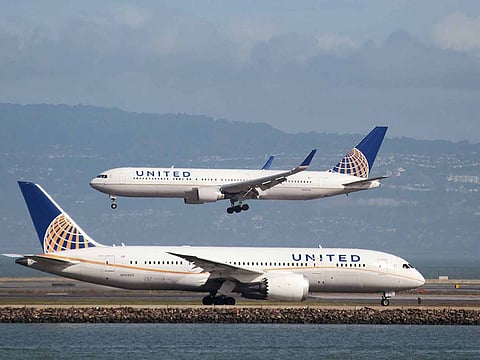US must find middle-ground on 5G roll-out concerns
Major airlines scramble to rejig flight schedules amid huge aviation concerns

Major international airlines including Emirates have been scrambling to either alter or cancel their flights to some destinations in the United States on the eve of a 5G wireless roll-out.
The launch of the 5th generation mobile wireless technology has triggered major safety concerns, despite two big wireless carriers saying they will delay parts of the deployment. US telecom industry insists that 5G roll-out would not create any hazards to cockpit equipment used in several types of aircraft.
AT&T and Verizon were supposed to roll out a faster wireless internet service in early December. Those plans hit hurdles after air-safety regulators moved to impose disruptive flight restrictions, because 5G service, it is argued, could potentially pose risks to cockpit equipment in aircraft.
Presently several airlines are warning of a “catastrophic” aviation crisis as telecoms get set to deploy new 5G services. “New C band 5G service — set to begin on Wednesday — may possibly render a significant number of aircraft unusable, causing chaos for US flights and potentially stranding tens of thousands of Americans overseas,” airline bosses noted.
Operational concerns
Already British Airways has opted to switch aircraft on its daily flight to Los Angeles to an Airbus A380 from the usual Boeing 777 service, media reports suggest. Emirates has said it will suspend flights to a number of US destinations. The airline said the decision was related to “operational concerns associated with the planned deployment of 5G mobile network services in the US”.
As of now, 5G communication stations are in operation near airports in many airports around the world, but there have been no reports of problems.
However, given flight safety concerns, US telecom companies have agreed to limit 5G signals for six months at certain airports chosen by aviation regulators for buffer zones. Both AT&T and Verizon have also agreed to temporarily defer turning on some wireless towers near key airports to avert a significant disruption to US flights.
This is good thinking but it is a short-term fix. US authorities need to have a long-term solution to the crisis. The US Federal Aviation Administration (FAA) must clear and allow commercial aeroplane fleet to perform low-visibility landings at airports where 5G C-bands are being deployed.
Flexibility from both industries — airlines and telecom — will ensure that 5G roll-out in the US is not affected by the latest standoff with FAA. At the same time, the launch of 5G technology must not compromise aviation safety.
Sign up for the Daily Briefing
Get the latest news and updates straight to your inbox



